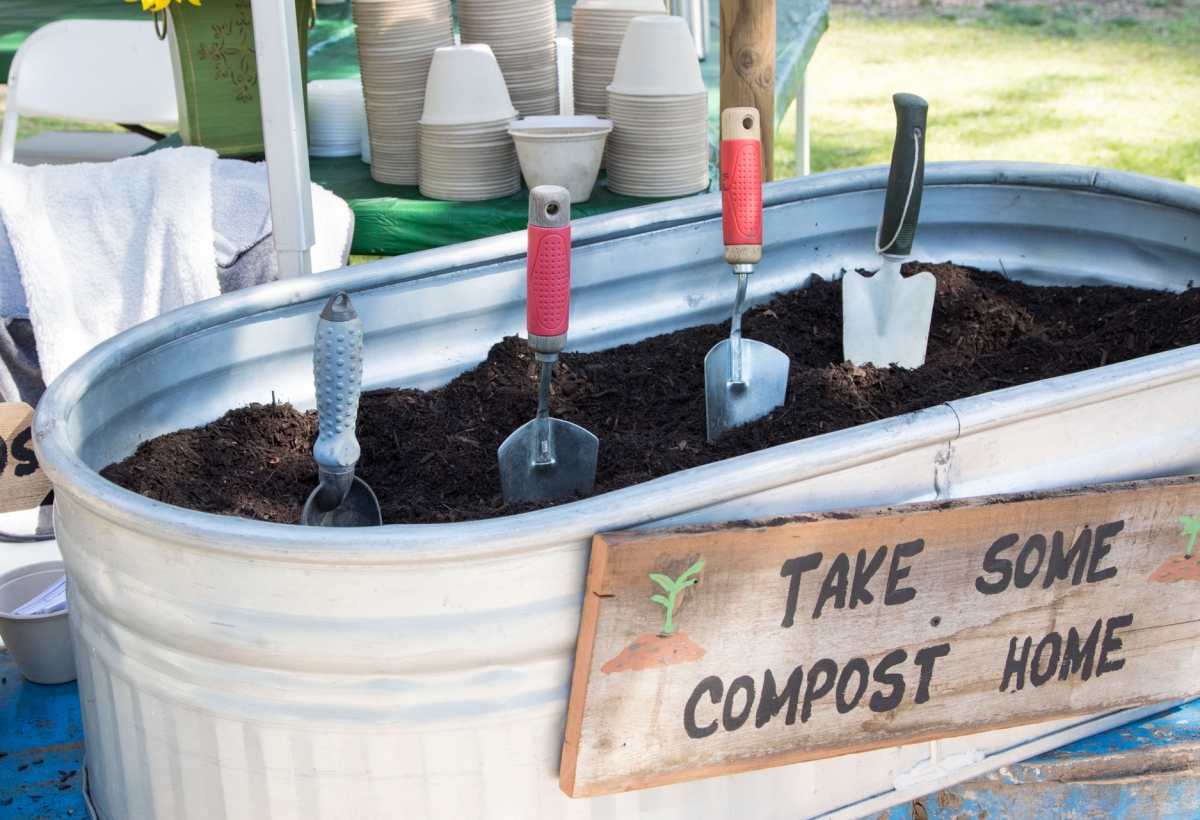Daily Dish the Nugget Markets blog

Composting Made Easy
Please note that this is an older article. Any products or services pictured or described may have changed or may no longer be available. Thank you for visiting!
Do you want a healthier and more productive garden? Do you want to reduce the need for fertilizers and store-bought soil amendments? Do you want to reduce the amount of waste that goes to the landfill every week? If you answered yes to any or all of these, you should consider composting!
Do you want a healthier and more productive garden? Do you want to reduce the need for fertilizers and store-bought soil amendments? Do you want to reduce the amount of waste that goes to the landfill every week? If you answered yes to any or all of these, you should consider composting!
Composting is the natural process by which organic material breaks down into a rich hummus-like material. This natural process can be accelerated by concentrating your organic material in one bin or pile, and providing it with three essential ingredients: organic material, moisture and air.
Ready to get started? It’s easy start your own compost pile with a few easy steps:
Pick a location for your bin or pile, preferably one that is out of the way, but can be easily accessed for watering and turning the pile over. You can border the pile on three sides or keep it loose.
Begin by adding layers of shredded newspaper, dried leaves from the yard, grass trimmings and whatever produce leftovers you may have sitting around. It is important to keep a 3 to 1 ratio of dry to moist ingredients.
Spray your pile down with water as you build it. Your goal is for it to have the moisture content of a damp sponge throughout.
Congratulations, you started a compost pile! …Now what? Here are a few tips to keep it going:
Ingredients: You can add new ingredients at any time—just keep in mind the 3 to 1 dry to moist rule.
- Good dry materials include carbon-rich items like newspaper, paper bags, paper towels/napkins, coffee filters, eggs, ash, fallen leaves and straw.
- Good moist materials include nitrogen-rich items include freshly mowed grass, weeds, fruits, vegetables, coffee grounds and flowers.
- Do NOT add fats, oil, grease, meat, bones, animal feces or wood, as these will not decompose in a backyard system and can attract unwanted pests.
It is also a good idea to shred, chop or mow your items before placing them in the pile. The smaller the pieces, the quicker they will break down.
Upkeep: Keep your compost pile going strong with a steady supply of ingredients, moisture and air.
- Turn your compost pile with a shovel every 7-10 days and if it is drying out, make sure to spray it with water.
- The pile will get warm on the inside. That is an indication that the pile is working effectively. If it’s not getting warm, make sure the pile is moist and add more nitrogen-rich (moist) items and less carbon-rich (dry) items.
- After a couple of months, the pile should take on a rich, earthy smell. If it smells foul, add more dry ingredients, turn the pile more frequently and make sure you are not putting any meat, fats, oils or grease in the pile.
Using the Compost: In just a few months you will have a rich, dark hummus-like material that can be mixed with soil and added to your garden.
- Sift finished compost through a wire mesh with holes no bigger than ½ inch before adding to your garden. This will filter out larger items that need to go back into the pile.
- Before planting new plants, add some compost to the top 8-10 inches of garden soil and mix in. This will replenish the nutrients that the previous crop took out of the ground.
- Whatever plants you pulled from the ground, you can add to your compost pile, too!
While there is not just ONE way to compost, if you follow these principles, you should have great results. Happy composting!